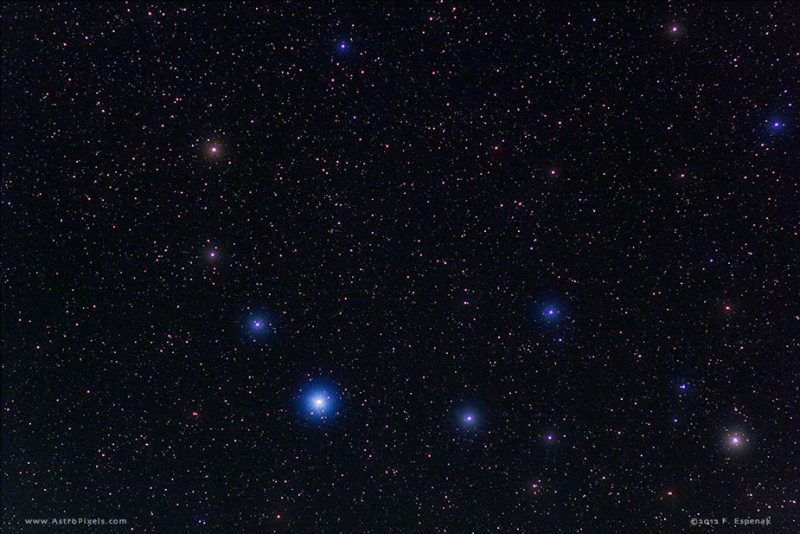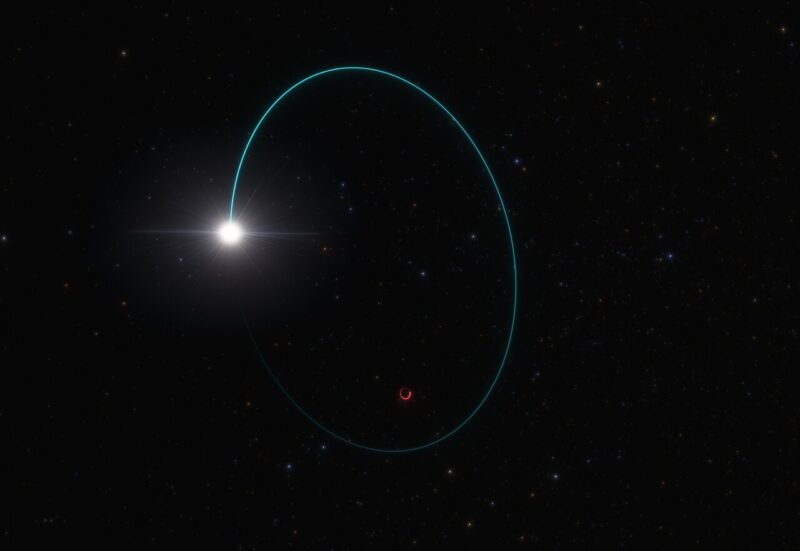The Northern Crown graces the summer skies
Tonight, look for a constellation that’s easy to see on the sky’s dome, if your sky is dark enough. Corona Borealis – aka the Northern Crown – is exciting to find. In fact, it’s easy to pick out as an almost-perfect semicircle of stars. You’ll find this beautiful star pattern in the evening sky from now until October.
Plus, the constellation Corona Borealis is easy to find since it’s located more or less along a line between two bright stars. The first is Arcturus in the constellation Boötes the Herdsman and the second is Vega in the constellation Lyra the Harp.
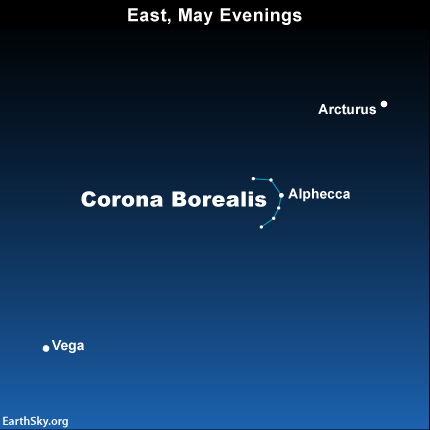
However, you’ll need a fairly dark sky to clearly see Corona Borealis between Vega and Arcturus. Then, once you find the semicircle of stars, it’s very noticeable.
The brightest star of the Northern Crown
The brightest star in Corona Borealis is Alphecca, also known as Gemma, sometimes called the Pearl of the Crown. The name Alphecca originated with a description of Corona Borealis as the “broken one.” This was in reference to the fact that these stars appear in a semicircle, rather than a full circle. Alphecca is a blue-white star, with an intrinsic luminosity some 60 times that of our sun. It’s located about 75 light-years from Earth.
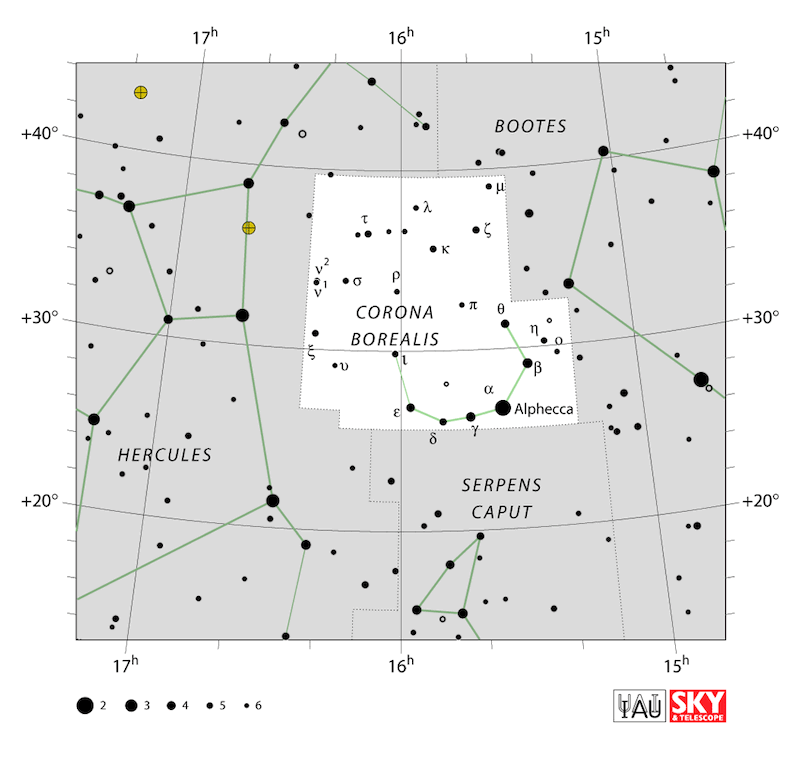
Watch for a ‘new star’ in the Northern Crown
T Coronae Borealis, or T CrB, is located 3,000 light-years away from Earth. It is a recurring nova with outbursts about every 80 years. Its last outburst was in 1946, and astronomers believe another will occur between February and September 2024.
The star system, normally of magnitude +10, is far too dim to see with the unaided eye. When the nova occurs, it will jump to around magnitude +2. That is roughly the same brightness to the North Star, Polaris.
Once its brightness peaks, it should be visible to the unaided eye for several days and just over a week with binoculars before it dims again, possibly for another 80 years.
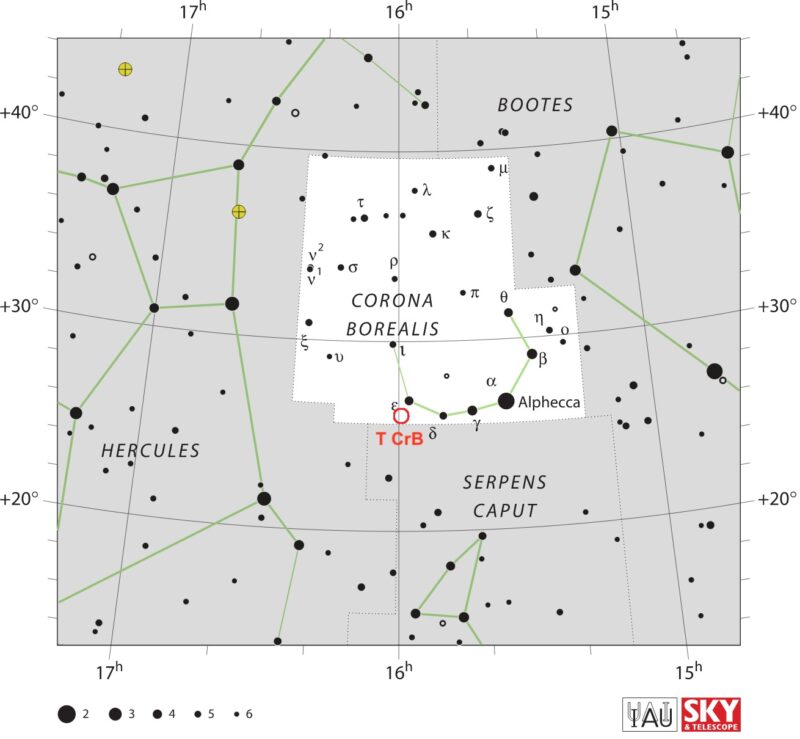
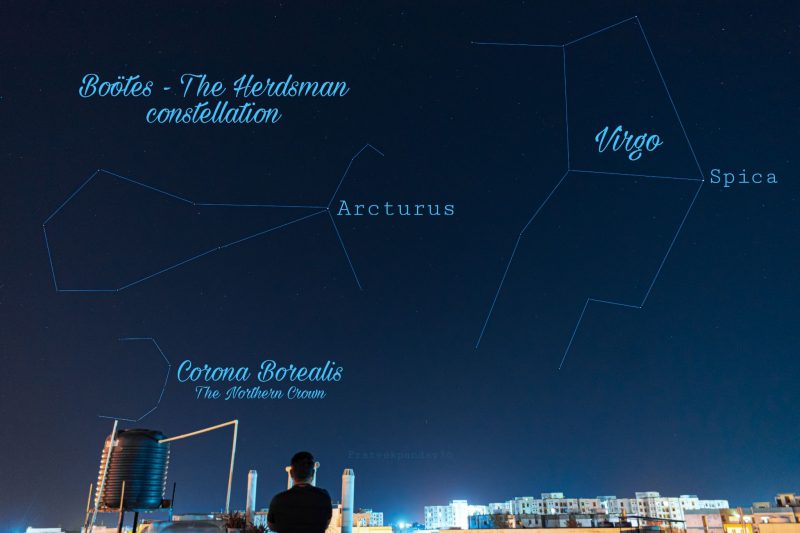
Bottom line: Look for Corona Borealis – the Northern Crown – between the brilliant stars Arcturus and Vega tonight! In fact, this constellation is very noticeable, if you have a dark sky.
Read more: A ‘new star’ from a nova outburst is expected soon
EarthSky astronomy kits are perfect for beginners. Order today from the EarthSky store

